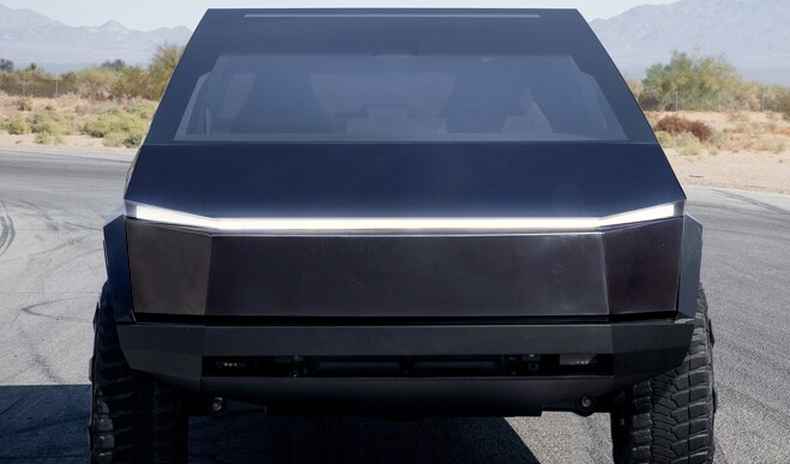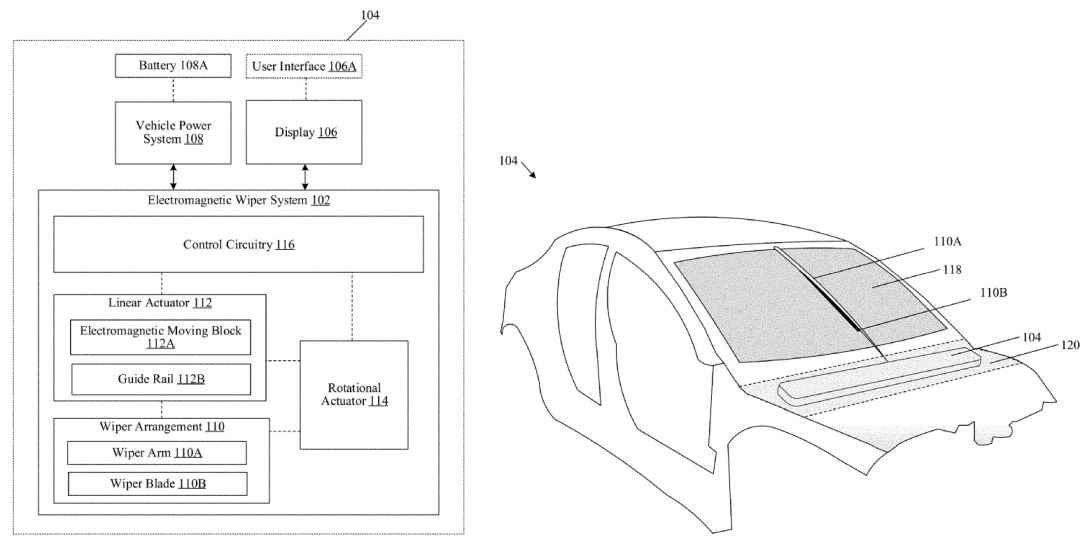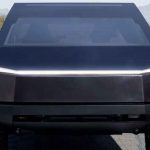Tesla applies for patent for electromagnetic wiper. Is this a coming revolution for wipers or is it for the new Cybertruck?

Did anyone notice that Tesla’s Cybertruck does not have windshield wipers? We will answer that question later. Anyway, a little history of wipers. The first windshield wipers were invented in 1903 by J. H. Apjohn. The wiper had two moving brushes up and down on a vertical plate glass windshield. In the same year, Mary Anderson devised a swinging arm that swept rain off the windshield when the driver moved a lever located inside the car. Anderson patented her invention of the mechanical windshield wiper in 1905, and it became standard equipment by 1913.
Since the first wipers were invented, there were little changes in wiper even with advances in technology. However, withe new generation of electric vehicles, traditional windshield wipers are becoming inadequate as cars become more intelligent and efficient. If you look at the traditional wiper, the parts visible from outside the car are the rubber blade, the wiper arm holding the blade, a spring linkage, and parts of the wiper pivots. The wiper itself has up to six parts called pressure points or claws that are small arms under the wiper. Inside, wiper has a small motor plus a gear set. The rotation of the gear drives the wiper blade across the windshield and makes full contact with the windshield, scraping rainwater, dust, etc., and affecting the driver cver of vision.
Tesla is about to revolutionize the traditional wipers for good. Not long ago, Tesla filed for a new patent in March 2019 with USPTO for an electromagnetic wiper design, which can be said to give us a new understanding of wipers. The patent shows off a design for a single windshield wiper that moves laterally, side-to-side, straight across the windshield.
Unlike traditional wipers’ arcing rotational sweeps, the Tesla wiper, in concept, moves with pretty much the same motion as a human holding one of those gas-station wiper tools. It trades a rotating motor arm mount for a pair of tracks, essentially, at the top and bottom of the windshield glass. Electromagnets in those “rails” and on the wiper arm itself propel the wiper back and forth. The same basic technology propels maglev trains along.
Published on September 5, the Tesla’s patent filing describes the wiper as: “An electromagnetic wiper system for a windshield of a vehicle includes a linear actuator, a wiper-arrangement, and control circuitry. The linear actuator includes at least one guide rail having permanent magnets and an electromagnetic moving block. The electromagnetic moving block includes at least one perforation that surrounds the at least one guide rail and at least one electromagnetic coil that surrounds the at least one perforation. The wiper-arrangement includes a wiper arm and a wiper blade, wherein at least the wiper arm is coupled to the electromagnetic moving block. The control circuitry controls a linear motion of the electromagnetic moving block along the at least one guide rail to steer the wiper arm that is coupled to the electromagnetic moving block back and forth across a length of the windshield to the windshield, wherein the electromagnetic moving block induces minimal friction during the linear motion.”

Tesla Electromagnetic Wiper System

